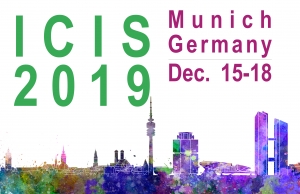Paper ID
3066
Description
Technological developments in emerging AI technologies are assumed to further routinize and improve the efficiency of decision making tasks, even in professional contexts such as medical diagnosis, human resource management, and criminal justice. We have little research on how AI technologies are actually used and adopted in practice. Prior research on technology in organizations documents a gap between the expectations for new technology and its actual use in practice. We conducted a comparative field study of three sections in a Department of Radiology in a major US hospital, whereby new and existing AI tools were being used and experimented with. In contrast to expectations about AI tools, our study reveals how such tools can lead routine professional decision making tasks to become nonroutine, as they increased ambiguity and decision makers had to work to reduce it. This is particularly challenging since the costs of dealing with ambiguity – increased time to diagnose – were often weighed against the benefits of such ambiguity (potentially more accurate diagnoses). This study contributes to literatures related to technology, work, and organizations, as well as the role of ambiguity in professionals’ knowledge work.
Recommended Citation
Lebovitz, Sarah, "Diagnostic Doubt and Artificial Intelligence: An Inductive Field Study of Radiology Work" (2019). ICIS 2019 Proceedings. 11.
https://aisel.aisnet.org/icis2019/future_of_work/future_work/11
Diagnostic Doubt and Artificial Intelligence: An Inductive Field Study of Radiology Work
Technological developments in emerging AI technologies are assumed to further routinize and improve the efficiency of decision making tasks, even in professional contexts such as medical diagnosis, human resource management, and criminal justice. We have little research on how AI technologies are actually used and adopted in practice. Prior research on technology in organizations documents a gap between the expectations for new technology and its actual use in practice. We conducted a comparative field study of three sections in a Department of Radiology in a major US hospital, whereby new and existing AI tools were being used and experimented with. In contrast to expectations about AI tools, our study reveals how such tools can lead routine professional decision making tasks to become nonroutine, as they increased ambiguity and decision makers had to work to reduce it. This is particularly challenging since the costs of dealing with ambiguity – increased time to diagnose – were often weighed against the benefits of such ambiguity (potentially more accurate diagnoses). This study contributes to literatures related to technology, work, and organizations, as well as the role of ambiguity in professionals’ knowledge work.


